-
 bitcoin
bitcoin $124586.364639 USD
0.62% -
 ethereum
ethereum $4670.671710 USD
3.33% -
 xrp
xrp $2.983701 USD
0.18% -
 tether
tether $1.000175 USD
-0.03% -
 bnb
bnb $1209.430642 USD
2.76% -
 solana
solana $231.365861 USD
0.51% -
 usd-coin
usd-coin $0.999665 USD
-0.02% -
 dogecoin
dogecoin $0.264657 USD
4.46% -
 tron
tron $0.346415 USD
1.60% -
 cardano
cardano $0.871586 USD
3.70% -
 chainlink
chainlink $23.451270 USD
7.56% -
 hyperliquid
hyperliquid $46.860071 USD
-2.96% -
 ethena-usde
ethena-usde $1.000120 USD
0.04% -
 sui
sui $3.611279 USD
1.08% -
 stellar
stellar $0.407149 USD
0.96%
Do I need to run a full node to mine?
Running a full node lets you validate transactions independently, but it's not required for mining—most miners rely on pools or remote nodes instead.
Jul 27, 2025 at 11:03 pm
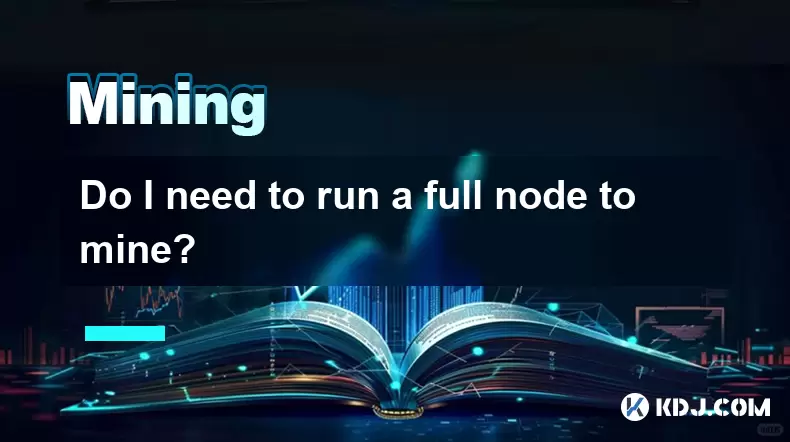
Understanding the Role of a Full Node in Cryptocurrency Networks
A full node is a crucial component of most decentralized blockchain networks. It downloads and verifies every block and transaction in the blockchain according to consensus rules. Running a full node allows users to independently validate the integrity of the network without relying on third parties. This ensures that no invalid transactions are accepted and that the rules of the protocol are enforced. In networks like Bitcoin or Ethereum, full nodes maintain a complete copy of the blockchain and contribute to the decentralization and security of the system.
However, the function of a full node is distinct from that of a miner. While miners are responsible for creating new blocks and securing the network through computational work (in Proof-of-Work systems), full nodes are validators. They do not participate directly in the mining process. Therefore, running a full node does not equate to mining, nor is it a prerequisite in most cases.
How Mining Works in Proof-of-Work Systems
Mining in Proof-of-Work (PoW) blockchains such as Bitcoin involves solving complex cryptographic puzzles to find a valid block hash. Miners use specialized hardware—such as ASICs or high-end GPUs—to perform trillions of calculations per second. The first miner to find a valid solution broadcasts the new block to the network, where full nodes then verify its legitimacy.
The mining process requires access to pending transactions, which are gathered from the mempool (memory pool). These transactions are packaged into a candidate block. The miner then repeatedly hashes the block header with a changing nonce until the resulting hash meets the network’s difficulty target. This process is computationally intensive but does not require the miner to store or validate the entire blockchain history.
While miners benefit from having direct access to up-to-date transaction data, they can obtain this information from various sources, including public mining pools, block explorers, or lightweight nodes. A full node provides one way to access this data, but it is not the only way.
Differences Between Full Nodes and Mining Rigs
A full node and a mining rig serve entirely different purposes. A full node emphasizes data integrity and network validation. It stores the complete blockchain, checks every transaction, and enforces consensus rules. In contrast, a mining rig focuses on raw computational power to solve cryptographic challenges and earn block rewards.
Hardware requirements differ significantly. Running a full node typically requires a computer with sufficient storage (e.g., over 400 GB for Bitcoin), a stable internet connection, and moderate CPU and RAM. On the other hand, a mining rig demands high-performance GPUs or ASICs, robust power supplies, and efficient cooling systems. The software used also differs: full nodes run clients like Bitcoin Core, while miners use mining software such as CGMiner, BFGMiner, or EasyMiner.
Importantly, a mining rig does not need to run Bitcoin Core or any full-node software to operate. It can connect to a remote node or a mining pool server to receive job assignments and submit results. This separation allows miners to focus on computation while relying on others for blockchain data.
Using Mining Pools and Remote Node Access
Most individual miners today join mining pools to increase their chances of earning consistent rewards. In a pool, multiple miners combine their computational power to solve blocks collectively. When a block is found, the reward is distributed based on each participant’s contributed work (shares).
Mining pools operate their own full nodes. These nodes validate transactions, construct block templates, and distribute mining jobs to participants. Miners in the pool only need to:
- Install mining software compatible with the pool
- Configure the software with the pool’s stratum server address
- Enter their wallet address for payouts
- Connect their hardware to the internet
The pool handles communication with the blockchain network. This means the miner does not need to download the blockchain or run a full node. The stratum protocol efficiently sends compact job data to miners, who return solutions. This model drastically reduces the technical and storage burden on individual participants.
Even solo miners can avoid running a full node by connecting to public nodes via protocols like BIP 37 (bloom filters) or using lightweight alternatives such as Electrum servers. However, this introduces trust assumptions, as the miner relies on others to provide accurate transaction data.
When Running a Full Node Might Be Beneficial for Miners
Although not required, some miners choose to run a full node for added control and security. Benefits include:
- Transaction selection autonomy: Miners can choose which transactions to include in their blocks, potentially maximizing fees
- Reduced reliance on third parties: Eliminates dependency on pool operators or public nodes for block templates
- Enhanced privacy: Prevents exposure of mining activity to external servers
- Support for network health: Contributes to decentralization and censorship resistance
To integrate a full node with mining operations, the miner must configure their mining software to communicate with the local node. For Bitcoin, this involves:
- Installing Bitcoin Core and allowing it to fully sync
- Enabling txindex=1 and server=1 in the bitcoin.conf file
- Starting the node with -daemon or via GUI
- Using getblocktemplate (GBT) requests to retrieve candidate block data
- Connecting mining software like BFGMiner or EasyMiner to the local node’s RPC interface
This setup allows the miner to generate block templates independently, though it still requires significant bandwidth and storage.
Frequently Asked Questions
Can I mine Bitcoin without downloading the entire blockchain?Yes, you can mine Bitcoin without downloading the entire blockchain. Most mining setups rely on mining pools or remote nodes that provide block templates and transaction data. Your mining hardware only needs to receive job assignments and return results, not store or validate the full chain.
Do mining pools run full nodes?Yes, reputable mining pools operate their own full nodes to validate transactions and construct blocks. This ensures that the blocks they mine are valid and will be accepted by the network. As a miner, you benefit from their node infrastructure without needing to run one yourself.
Is it safer to mine using my own full node?Running your own full node offers greater security and autonomy. It prevents potential manipulation by pool operators or third-party nodes, such as withholding high-fee transactions. However, it requires more technical setup and resources. For casual miners, the added safety may not outweigh the complexity.
Can I use a lightweight wallet node for mining?No, lightweight (SPV) nodes like those used in Electrum or mobile wallets do not provide the full functionality needed for mining. They do not maintain a complete copy of the blockchain or support getblocktemplate requests. Mining requires access to raw transaction data and block construction capabilities, which only full nodes or dedicated mining pool servers provide.
Disclaimer:info@kdj.com
The information provided is not trading advice. kdj.com does not assume any responsibility for any investments made based on the information provided in this article. Cryptocurrencies are highly volatile and it is highly recommended that you invest with caution after thorough research!
If you believe that the content used on this website infringes your copyright, please contact us immediately (info@kdj.com) and we will delete it promptly.
- BlockDAG, DOGE, HYPE Sponsorship: Crypto Trends Shaping 2025
- 2025-10-01 00:25:13
- Deutsche Börse and Circle: A StableCoin Adoption Powerhouse in Europe
- 2025-10-01 00:25:13
- BlockDAG's Presale Buzz: Is It the Crypto to Watch in October 2025?
- 2025-10-01 00:30:13
- Bitcoin, Crypto, and IQ: When Genius Meets Digital Gold?
- 2025-10-01 00:30:13
- Stablecoins, American Innovation, and Wallet Tokens: The Next Frontier
- 2025-10-01 00:35:12
- NBU, Coins, and Crypto in Ukraine: A New Yorker's Take
- 2025-10-01 00:45:14
Related knowledge
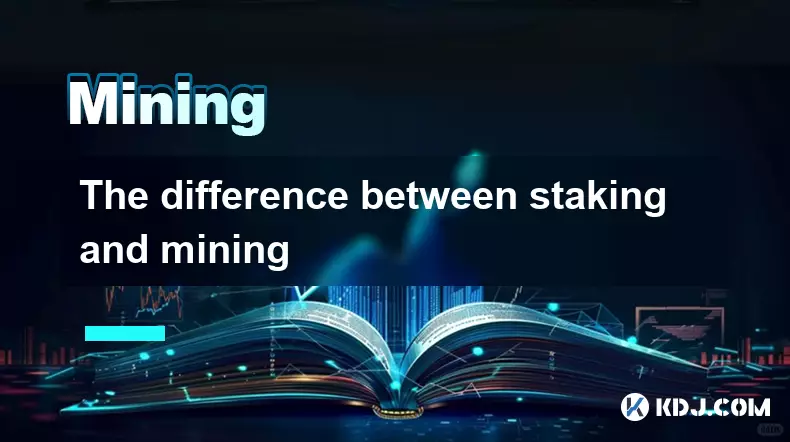
The difference between staking and mining
Sep 24,2025 at 05:18am
Understanding Staking in the Cryptocurrency Ecosystem1. Staking involves holding funds in a cryptocurrency wallet to support the operations of a block...
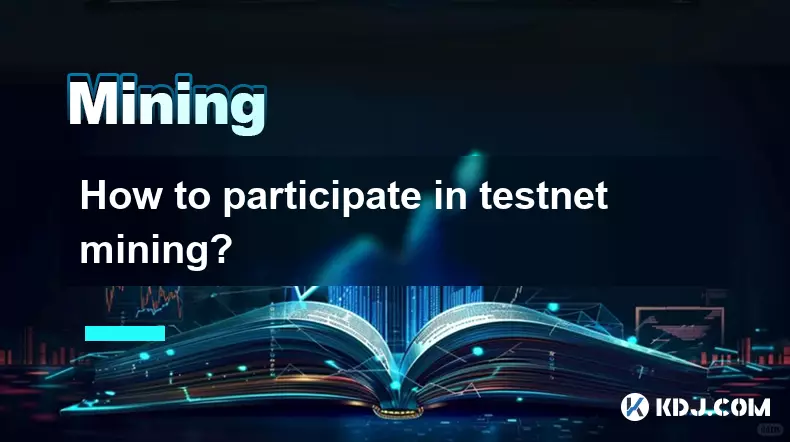
How to participate in testnet mining?
Sep 22,2025 at 09:18am
Understanding Testnet Mining in the Crypto Ecosystem1. Testnet mining is a method used by blockchain developers to simulate real-world conditions on a...

How to dispose of abandoned mining machines?
Sep 19,2025 at 08:19pm
Assessing the Condition of Abandoned Mining Rigs1. Begin by inspecting each mining machine for visible damage, corrosion, or missing components. Machi...

How to identify high-quality mining pools?
Sep 21,2025 at 03:19pm
Reputation and Track Record1. A mining pool’s reputation is built over time through consistent performance and transparency. Pools that have operated ...
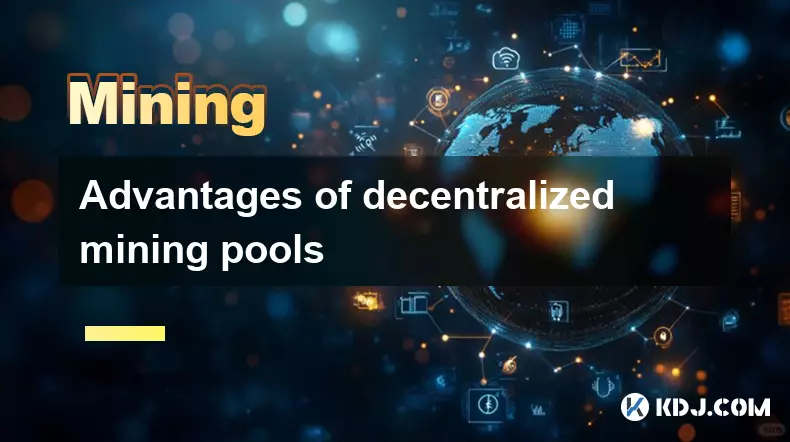
Advantages of decentralized mining pools
Sep 20,2025 at 04:36pm
Enhanced Security and Resistance to Censorship1. Decentralized mining pools operate on blockchain-based smart contracts, eliminating the need for a ce...
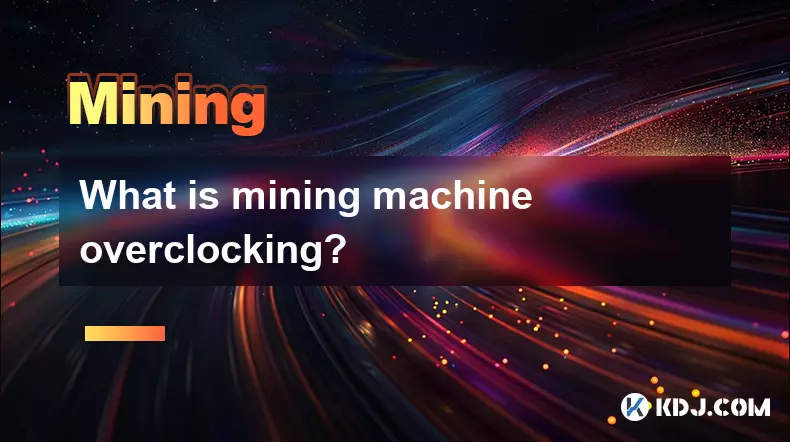
What is mining machine overclocking?
Sep 21,2025 at 07:19pm
Understanding Mining Machine Overclocking1. Mining machine overclocking refers to the process of increasing the operating frequency of a cryptocurrenc...

The difference between staking and mining
Sep 24,2025 at 05:18am
Understanding Staking in the Cryptocurrency Ecosystem1. Staking involves holding funds in a cryptocurrency wallet to support the operations of a block...

How to participate in testnet mining?
Sep 22,2025 at 09:18am
Understanding Testnet Mining in the Crypto Ecosystem1. Testnet mining is a method used by blockchain developers to simulate real-world conditions on a...

How to dispose of abandoned mining machines?
Sep 19,2025 at 08:19pm
Assessing the Condition of Abandoned Mining Rigs1. Begin by inspecting each mining machine for visible damage, corrosion, or missing components. Machi...

How to identify high-quality mining pools?
Sep 21,2025 at 03:19pm
Reputation and Track Record1. A mining pool’s reputation is built over time through consistent performance and transparency. Pools that have operated ...

Advantages of decentralized mining pools
Sep 20,2025 at 04:36pm
Enhanced Security and Resistance to Censorship1. Decentralized mining pools operate on blockchain-based smart contracts, eliminating the need for a ce...

What is mining machine overclocking?
Sep 21,2025 at 07:19pm
Understanding Mining Machine Overclocking1. Mining machine overclocking refers to the process of increasing the operating frequency of a cryptocurrenc...
See all articles










































































